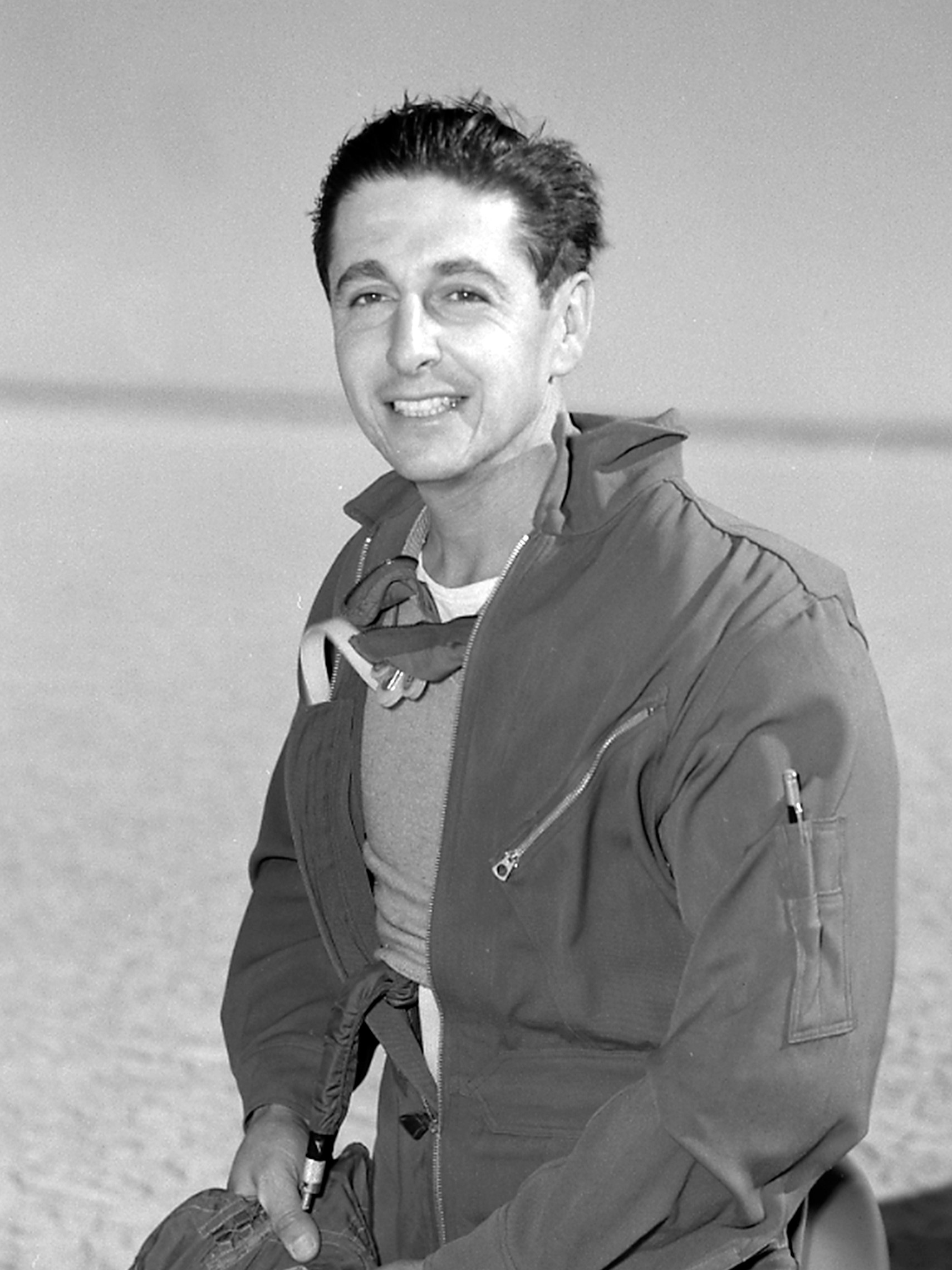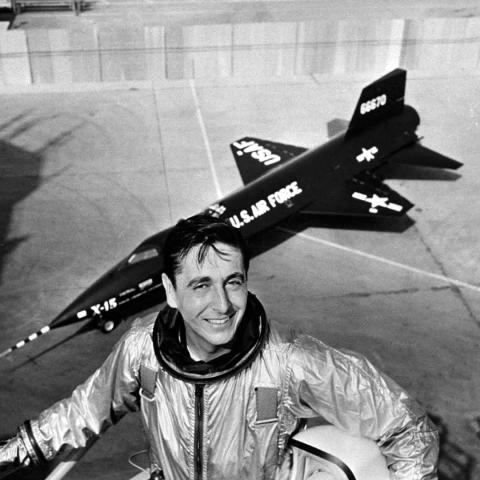CROSSFIELD-ALBERT
ALBERT "SCOTT" CROSSFIELD

LT

PLAYED MAJOR ROLE IN
GETTING MEN TO THE MOON
Albert Scott Crossfield was born October 2, 1921, in Berkeley, California, and grew up in California and Washington. During 1943 he enlisted in the Navy and following flight training near Seattle and in Corpus Christi, he was commissioned as an ensign and designated a Naval Aviator. He initially served as a flight and gunnery instructor as he trained pilots for the global war. He next attended dive bomber school following which he was assigned to Navy Air Group 51 and became its Engineering Officer. The group trained in F6F and F4U fighter aircraft in preparation for the invasion of Japan.
Crossfield never saw combat but following the end of World War II he reportedly flew for an unspecified time as a member of the Naval Reserve while attending the University of Washington, earning a Bachelor of Science degree in 1949 and a M.S. Aeronautical Engineering degree in 1950. While earning his degrees he also worked in the University’s Kirsten Wind Tunnel. In 1950, Crossfield joined the National Advisory Committee for Aeronautics’ (NACA) High-Speed Flight Station and during the next five years he flew as a test pilot nearly all the experimental aircraft under test at Edwards Air Force Base in California, including the X-1, XF-92, X-4, X-5, Douglas D-558-1 Skystreak and the Douglas D-558-11 Skyrocket. Crossfield is perhaps best known for two achievements. First, for piloting the X-15 during 14 flights of this rocket powered aircraft in which he attained an altitude of 15.3 miles and reached a speed of 1,959 mph. Second, on November 20, 1953, piloting the Douglas D-558-2 Skyrocket rocket and jet-propelled aircraft, reaching a speed faster than Mach 2, thus becoming the first person to travel at more than twice the speed of sound and survive. Crossfield was the perfect test pilot, the first of a new generation of flying aeronautical engineer as he had flying skills and steely nerves, plus an engineer’s intuition about human factors and aerodynamics.
Following the above achievements, Crossfield became division director of test and quality assurance for NACA’s Paraglider Project, served as a division vice president for research and development for Eastern Air Lines and, subsequently, as a staff vice president working with U.S. military and civilian agencies on air traffic control technologies. In 1977 he joined the U.S. House of Representatives Committee on Science and Technology where he served as a technical adviser on all aspects of civil aviation research and development until his retirement in 1993. In 1986, this House Committee tasked Crossfield to be a member of the task group assigned to investigate the Space Shuttle Challenger disaster.
In the 1991 Discovery Channel series Frontiers of Flight, during one segment it was said he “…probably had more centrifuge time, pressure suit time and pressure chamber time and all of that than any man alive.” He is credited with designing the first full-pressure suit and is well know for having worn out at least one pressure suit. In his X-15 days the press dubbed him “Our First Man in Outer Space,” although he never quite flew this high. In the end, Crossfield played a major role getting men to the moon.
Unfortunately, Albert Scott Crossfield died on April 19, 2006, in an aircraft accident. The former test pilot took off on an IFR flight plan in his privately owned Cessna 210A from Prattville, Alabama, to fly to his home near Manassas, Virginia. Before departing, he discussed the weather with an acquaintance and mentioned that he “might need to work his way around some weather, but it did not look serious.” Over Georgia he encountered severe thunderstorms and after radioing air traffic controllers he received permission to turn back. About 30 seconds later the airplane disappeared from radar and the wreckage was later discovered in the mountains near Ludville, Georgia. An investigation blamed the crash on his failure to obtain updated weather information and controllers failure to warn him of the storm. His ashes have been interred at Arlington National Cemetery.
Submitted by CDR Roy A. Mosteller, USNR (Ret)


